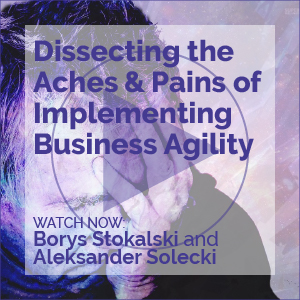Date Visibility
Date Visibility
Date Visibility
Trends that (Really) Matter
Date Visibility
Date Visibility
The Culture Gulf and Its Consequences
The Culture Gulf and Its Consequences
How Architects Think About the World
I've remarked before that one of the great things about the popularity of the Internet and the Web (really beginning around 1997) is that it forced many IT people to take a larger view of their jobs.
The Culture Gulf and Its Consequences
The Culture Gulf and Its Consequences
Increasing the Value Gained from Current Sourcing Relationships
Software Teams: Your Most Important Asset
Give a software team an interesting project and you will have a group of happy campers -- true or false? Well, you might say, interesting projects are fine, but team performance is also influenced by good management and a decent salary. Very few happy campers earn a poor salary. That is mostly true, but salary, management, and interesting work do not all influence teams in the same way.
Radical Management and Strategy: Do We Care About What We Know?
How seriously do we take the learning challenge in our companies? Do we worry about a skills gap? Do we reward learners? Do we optimize recruiting opportunities? Are we on top of this challenge? Or is the distance between what we know how to do and what we need to do increasing?
THE GROWING CHALLENGEData from a December 2003 Cutter Consortium survey on how we're changing suggests that we're making progress, but there's still much work to be done.
The Graying of IT: The Aging Workforce and Legacy Applications
In the early 1990s, there was something of a rush to migrate mainframe applications to client-server platforms. By the mid-1990s, this rush slowed as organizations found themselves needing to deal with the reality of the Internet. Finally, with the bursting of the Internet bubble and the subsequent economic downturn, the accepted wisdom was that the number of legacy applications was simply too great to "convert" and that, in many cases, the best that could be done was simply to apply Web-based front ends to existing applications.
Cultivating the IT Portfolio Manager
Within most corporations, IT has been viewed as a black hole, draining resources for purposes that senior non-IT executives can't understand or control properly. But by adopting a portfolio management approach, control and visibility into current and proposed IT projects is transferred to non-IT executives. Business executives make IT investment decisions within an enterprise framework that cuts across departmental silos.
Portfolio management practices provide business value in four major ways:
A Startup Framework for Centers of Excellence
Much confusion surrounds the term "center of excellence" (CoE). It is often used interchangeably with "competency center," "knowledge center," "resource pool," and "community of practice." Though these structures share many similarities, each has a unique focus and set of benefits. For the purpose of this article, CoEs are defined as centralized groups of IT resources focused on new or complex technologies and/or processes with the explicit charter to support other IT groups across the larger organization. In addition to this primary role, CoEs have the following functions:
Skills Today, Gone Tomorrow
What do we need to know to succeed?
How many times have we asked this question of ourselves and our colleagues? After almost 30 years in this business, I can confidently tell you, "It depends."





